History & Science of The Moors, Greatest Race-Traitors in Black History
Video: Dr.BOOKER T. COLEMAN
The History and Science of The Moors
*Note* Though we DO NOT AGREE with everything Dr. Booker T. Coleman is saying, he reveals important facts on history. Viewers, please STUDY and do your OWN RESEARCH and pick sense from nonsense. As Bob Marley sang, emancipate yourself from mental slavery, none but ourselves can free our minds! Our people must look to the Ancient Ethiopian Culture as their pure guide instead of relying on solely the knowledge from the Moors, Dogon and Kemetic culture. There must be a reason She, Ethiopia is still the ONLY NATION IN AFRICA WHICH REMAINS UNCONQUERED.
Not everything African or Black in history benefited our people. Study the Facts before you join any organization or group just because they helped to make great scientific and cultural strides in history. His Imperial Majesty Emperor Haile Selassie I said, “When all RIGHTEOUS AFRICANS come together, the world will come together for that is our Divine destiny!” He said RIGHTEOUS, being the operative word. He didn’t say famous, intellectual, wealthy or powerful for only Righteousness shall exalt THIS NATION! Therefore, we implore all seekers of truth to study for themselves, seek knowledge and when you find it, give it away for free.
This post and videos shine light on the true history and science of the Moors and how they played a role in helping colonial slave masters capture and murder countless in systemic genocides throughout time, helping to capture and murder children of the Motherland (Ethiopia/Africa) during the Trans Atlantic Slave Trade. They also assisted during many other wars, such as the Great Ethiopian Genocide during Mussolini’s vicious invasion during the Second Italo-EthiopianWar and also King Leopold II’s genocide and oppression in the Congo.
The Moors were Muslim inhabitants of the Maghreb, the Iberian Peninsula, Sicily, and Malta during the Middle Ages. The Moors were initially of Berber and Arab descent, though the term was later applied to Africans, Iberian Christian converts to Islam, and people of mixed ancestry.
As early as the Middle Ages, “Moors were commonly viewed as being mostly black or very swarthy, and hence the word is often used for negro,” according to the Oxford English Dictionary. Notice how they wear the red FEZ HATS AND VEST, as often featured with MONKEYS used as circus acts for tricks and beaten by masters with sticks and whips if they did not perform.
Video: The MOORS:
The Greatest Race-Traitors in Black History
EXCELLENT Facts! WARNING! Narrator uses raw verbiage and delivery!
In 711 the Moors invaded the Iberian Peninsula from North Africa and called the territory Al-Andalus, which at its peak included most of modern-day Spain, Portugal, and Septimania. The Moors occupied Mazara on Sicily in 827, developing it as a port, and they eventually consolidated the rest of the island and some of southern Italy. Differences in religion and culture led to a centuries-long conflict with the Christian kingdoms of Europe, which tried to reclaim control of Muslim areas. In Spain this conflict was referred to as the Reconquista. In 1224 the Muslims were expelled from Sicily to the settlement of Lucera, which was destroyed by European Christians in 1300. The fall of Granada in 1492 marked the end of Muslim rule in Iberia, although a Muslim minority persisted until their expulsion in 1609.
The term “Moors” has also been used in Europe in a broader, somewhat derogatory sense to refer to Muslims in general, especially those of Arab or Berber descent, whether living in Spain or North Africa. During the colonial era, the Portuguese introduced the names “Ceylon Moors” and “Indian Moors” in Sri Lanka, and the Bengali Muslims were also called Moors.
Moors are not a distinct or self-defined people. Medieval and early modern Europeans variously applied the name to Sub-Saharan Africans, Arabs, Berbers and Muslim Europeans. In the modern Iberian Peninsula, “Moor” is sometimes colloquially used for any person from North Africa, though some people consider this use of the term pejorative. In Spanish the term is “moro”, and in Portuguese it is “mouro”.
The “Moors” of Europe
Etymology
Variants of the term “Moor” have been used by many Europeans since ancient times as a general description for indigenous Africans. Contrary to popular belief,
the term is not synonymous with “Islamic” or any specific Arab or African religion, civilization, or ethnicity.
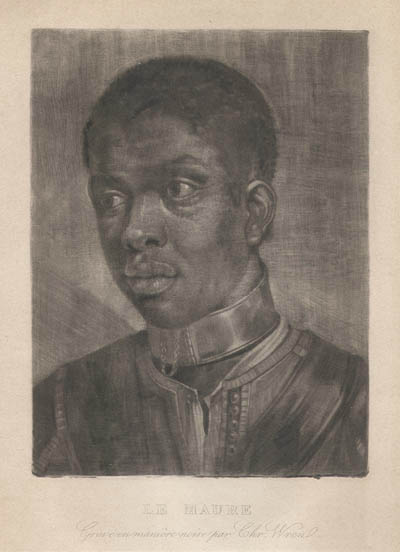 |
The origin of the English term, “Moor,” is the Greek word, “μαυρο” or “mavro” which literally means “black, blackened or charred” and has long been used to describe black or very dark things such as, “Mavri Thalassa” which refers to the Black Sea or “mavri spilia” which means “black cave.” Ancient Greeks used the term to describe the complexion of Africans and (even today, some Greeks use “mavro” to refer to Africans, although in a pejorative manner).
One need not be a linguist to see the word’s evolution from the Greek “mavro” to the Latin word, “mavrvs” (actually, “mavro” in the ablative, singular, masculine Latin form). The English transliteration is “Maurus” and the plural form is “Mauri,” specifically used by ancient Romans in reference to Black Africans. Writers in both Greek and Latin specifically used the term as a racial identity.
In the Epitome de Caesaribus (390s AD), we learn that Aemilianus was “a Moor by race.”
Procopius of Caesarea (500-565 AD), a Byzantine scholar who wrote in Greek, said in his History of the Wars, “beyond that there are men not black-skinned like the Moors…”
Even through the middle ages, the term (as well as the Spanish, “moro,” the German “mohr,” the Dutch “moor” etc.) continued to be used in reference to Black Africans. In one of the oldest Dutch texts (1300s AD),
a Moor was described specifically as “black.”
Further proof of the true definition of the Latin term “Maurus” can be found in early English-Latin dictionaries:
– “Maurus” was synonymous with “Moor,” “negro,” and “Aethiops” in John Etick’s A new English-Latin dictionary (1783)
– In A new Latin-English dictionary by William Young (1810), “Maurus” is a “black Moor”
– According to the Ainsworth’s Latin Dictionary, Morell’s abridgment by Alexander Jamieson, Robert Ainsworth (1828), “Maurus” means “black Moor”
The English term “Moor” also meant “Black” in English dictionaries and encyclopaediae prior to the 20th century:
– “Moor” meant “negro” or “black-a-moor” in A Dictionary of the English Language (1768) by Samuel Johnson
– The Encyclopaedia Londinensis (1817) by John Wilkes lists “moor” as follows: “[maurus, Lat. μαυρο, Gr., black.]
a negro; a blackamoor.”
– John Olgilvie’s The Imperial Dictionary of the English Language (1882), a Moor was a “black man or negro”
Somehow by the 20th century, “Maurus” and “Moor” suddenly transformed into Berber and Arab — a grave contrast to historical precedent.
Moors In Ancient and Medieval European History
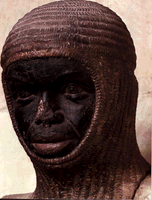 |
The ancient Romans thoroughly documented the lives of indigenous Africans to whom they commonly referred as the Moors. By the 4th century AD, the Roman army
heavily recruited Moors for their exceptional skill in battle. One such Moorish general, Aemilianus (207-253 AD) as described in Epitome de Caesaribus (390s AD), was so skilled that he was made emperor in the Roman province of Moesia (Balkan peninsula), albeit for only 4 months’ time.
Other skilled Africans were made Catholic patron saints, such as the popular St. Maurice or Mauritius in Latin as described in the Passio Martyrum Acaunensium (The Passion of the Martyrs of Agaunum) by French bishop St. Eucherius (434-450 AD). According to the text, St. Maurice lived around 286 AD and was believed to be part of the Theban Legion of Egyptian Christians who served in the Roman army under his command. St. Maurice’s brigade was supposedly decimated for disobeying orders to kill Christians in Roman Helvetia (Switzerland). The oldest known physical representation of him, however, was not created until 1281 AD (a detailed statue now housed in the cathedral of Magdeburg, Germany; shown on the right).
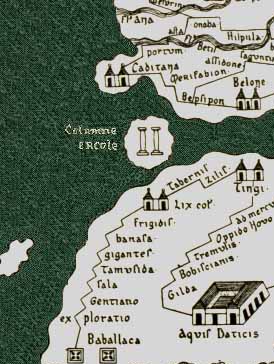 |
Neither Aemilianus nor St. Maurice were from so-called “Mauretania” (Latin: Mavritania) which is erroneously believed to be the name of an ancient Roman province along the northwestern coast of Africa. This particular region was neither called “Mauretania” in any known ancient literary text nor was it named after the so-called “Mauri tribe,” as many modern historians believe. “Mauri” is merely the plural form of the Latin transliteration, “Maurus,” as mentioned above. The oldest known map of that region (shown at right) shows its name was Tingi (or Tingitana in literature). Instead, Roman Catholic writers of the 5th-9th centuries AD used “Mauretania” synomymously with all of Africa, not any one particular region.
A well-known Catholic saint from Africa was Victor Maurus or Saint Victor the Moor, a martyr who supposedly lived around 303 AD (the date of the oldest known depiction of him might not be reliable since the church in which it is found, the Basilica of Saint Victor near Milan, was reconstructed several times and then nearly destroyed in World War II). The life of another African Catholic martyr, St. Zeno of Verona, was first recounted by 7th century Italian author, Coronato who affirmed that Zeno was an African native.
By 470 AD, following the fall of the Roman empire, Africans slowly began repopulating southern Europe, and by 711 AD, General Tarik ibn Ziyad al-Gibral (or Tariq bin Abdullah bin Wanamu al-Zanati), an Islamized African native whence the name, “Gibraltar,” is derived, led a major invasion beyond that same peninsula. His fortress (shown below) is the earliest known medieval castle in Europe, built centuries before those of the Loire Valley in France. According to legend, the phrase, “Thank heaven for 711” comes from the overwhelming sentiment of relief experienced when Moorish civilization permeated the Iberian peninsula (Spain, Portugal and Andorra) and Southern France and replaced primitive Visagothic feudal serfdom. For over 750 years, the Moors would lead Spain into an unprecedented era of freedom of association, religion, education and enterprise.
 |
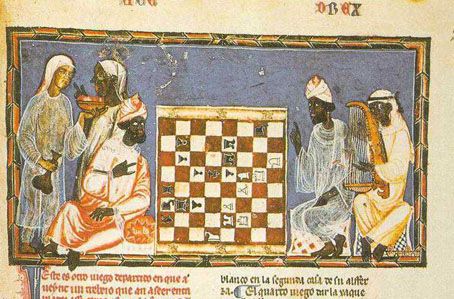 |
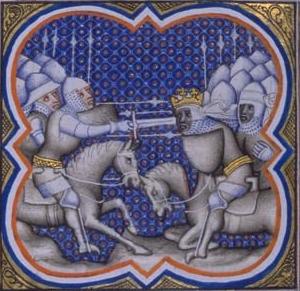 |
Sources: Taneter.org





